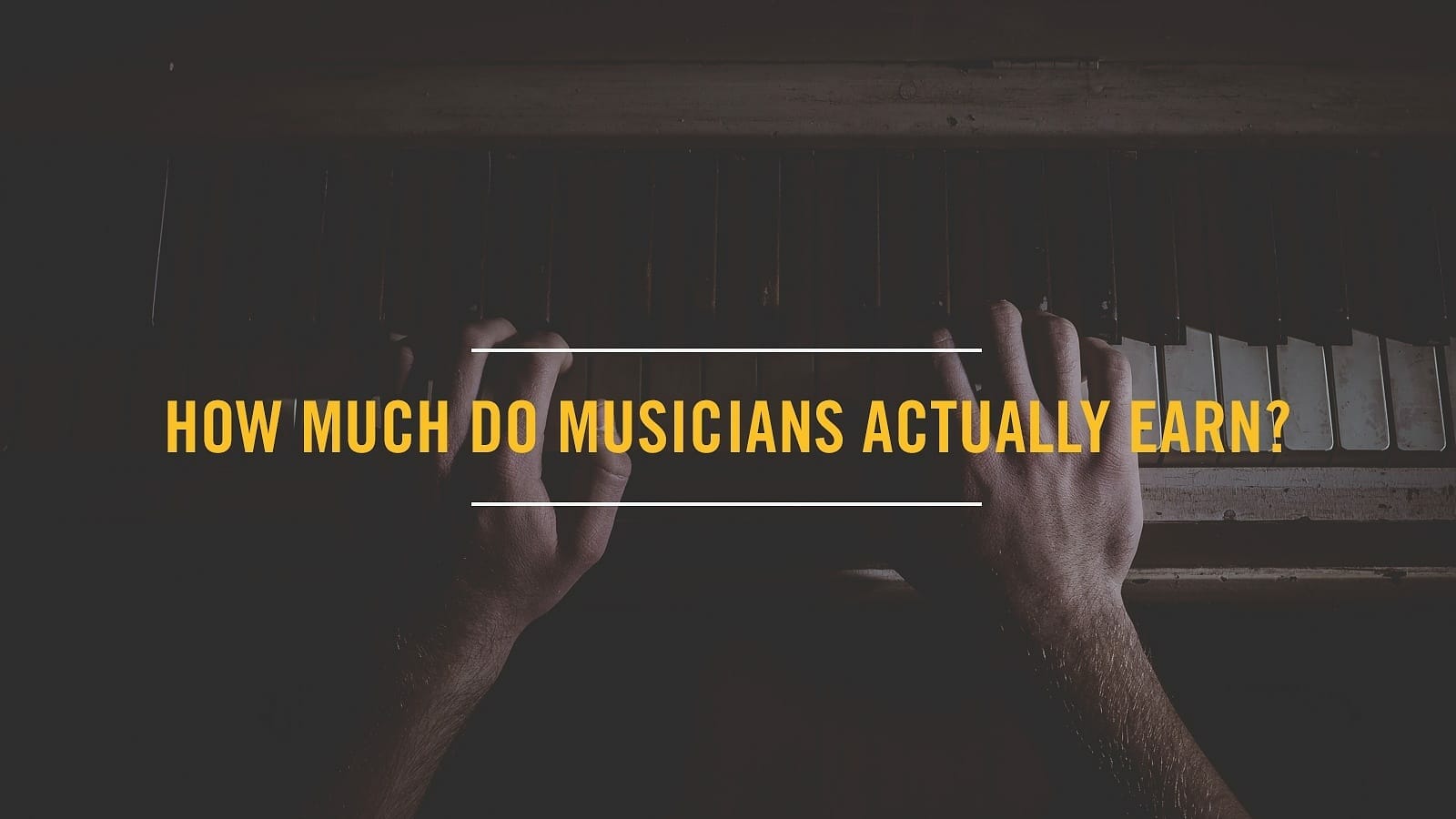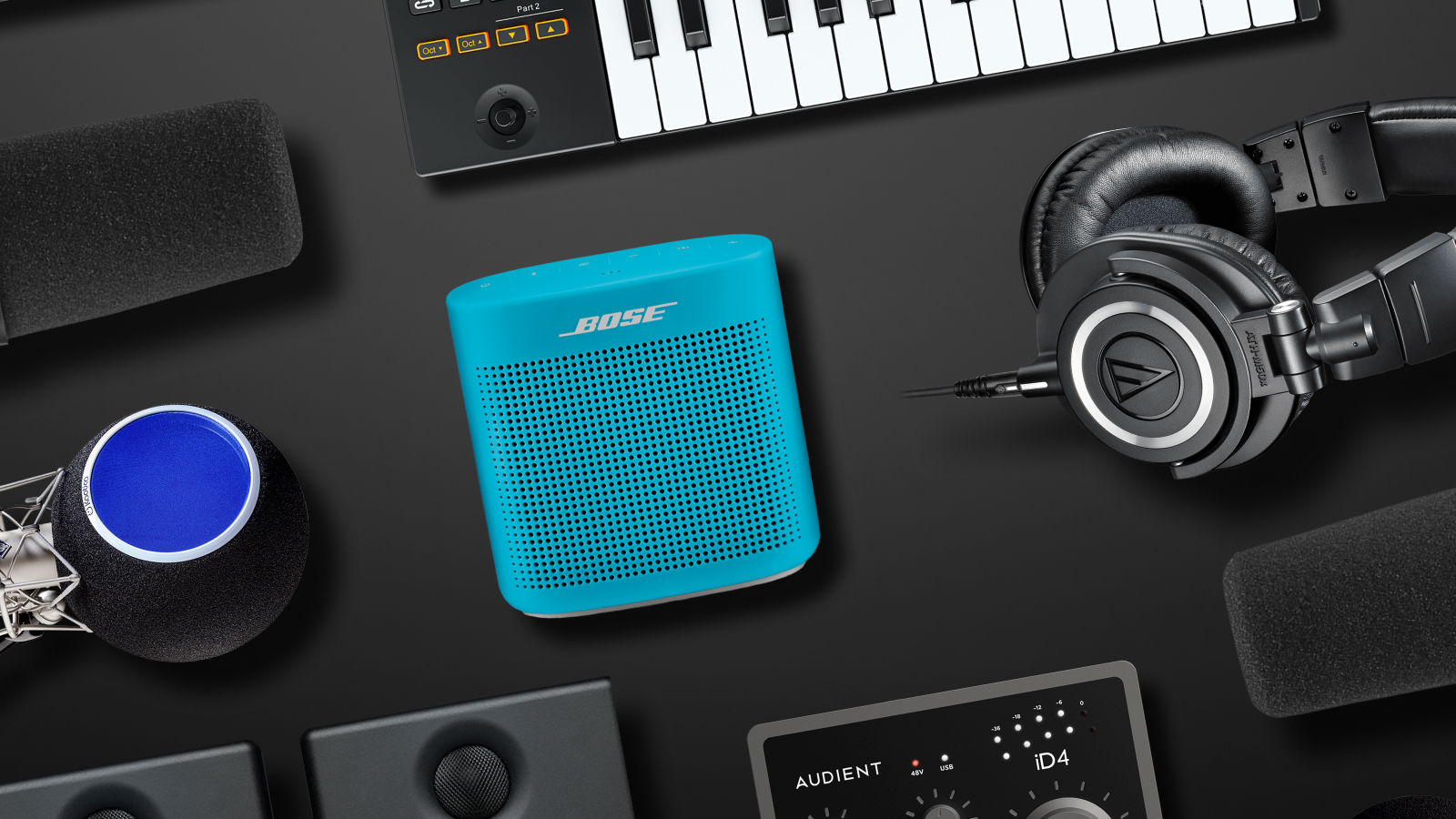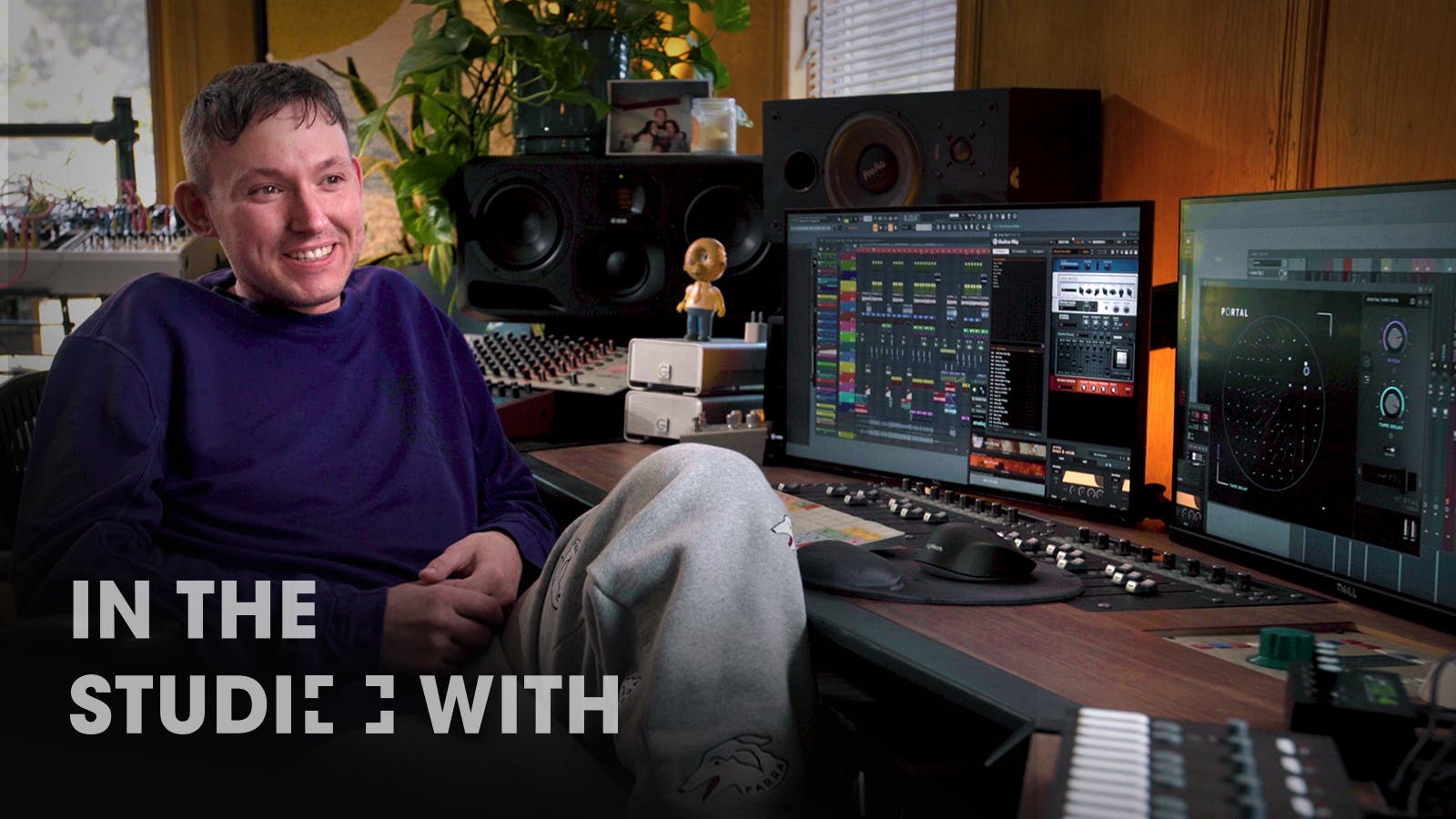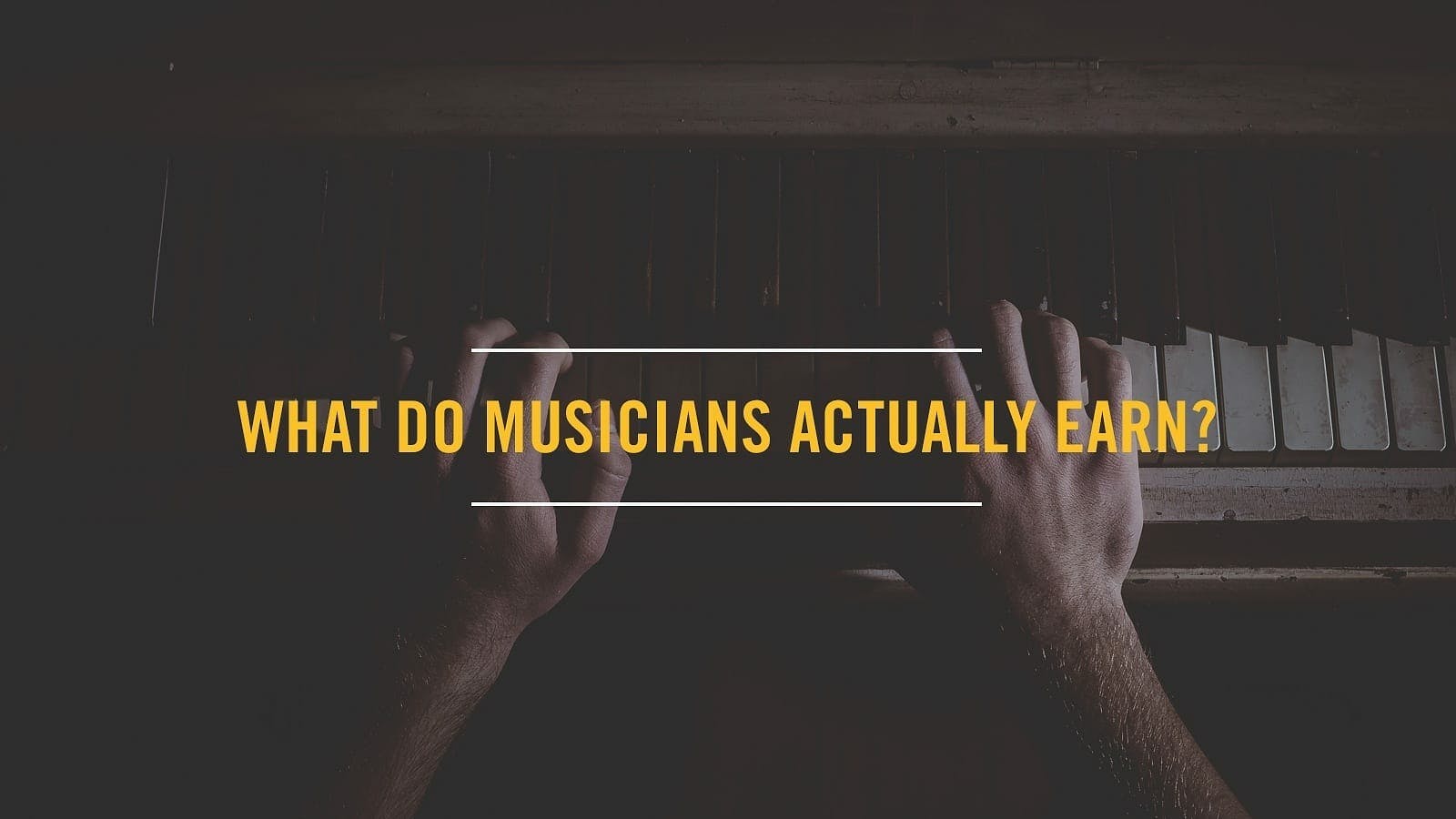
How much do musicians actually earn? The shifting landscape of the music industry has made it hard to gauge exactly how much money working musicians in the modern age actually earn on average. Sure, some artists get big cash advances, fast cars, and fancy mansions, but there are also independent musicians and performers who are able to make a reasonable living from live shows and streaming income.
The data doesn’t lie: DIY artists make up a fast-growing sector of the music industry. According to a report by MIDIA Research, unsigned artists releasing music without the help of a label made up 6.3 percent of all Spotify streams in 2020 — a dramatic 28 percent increase from 2019.
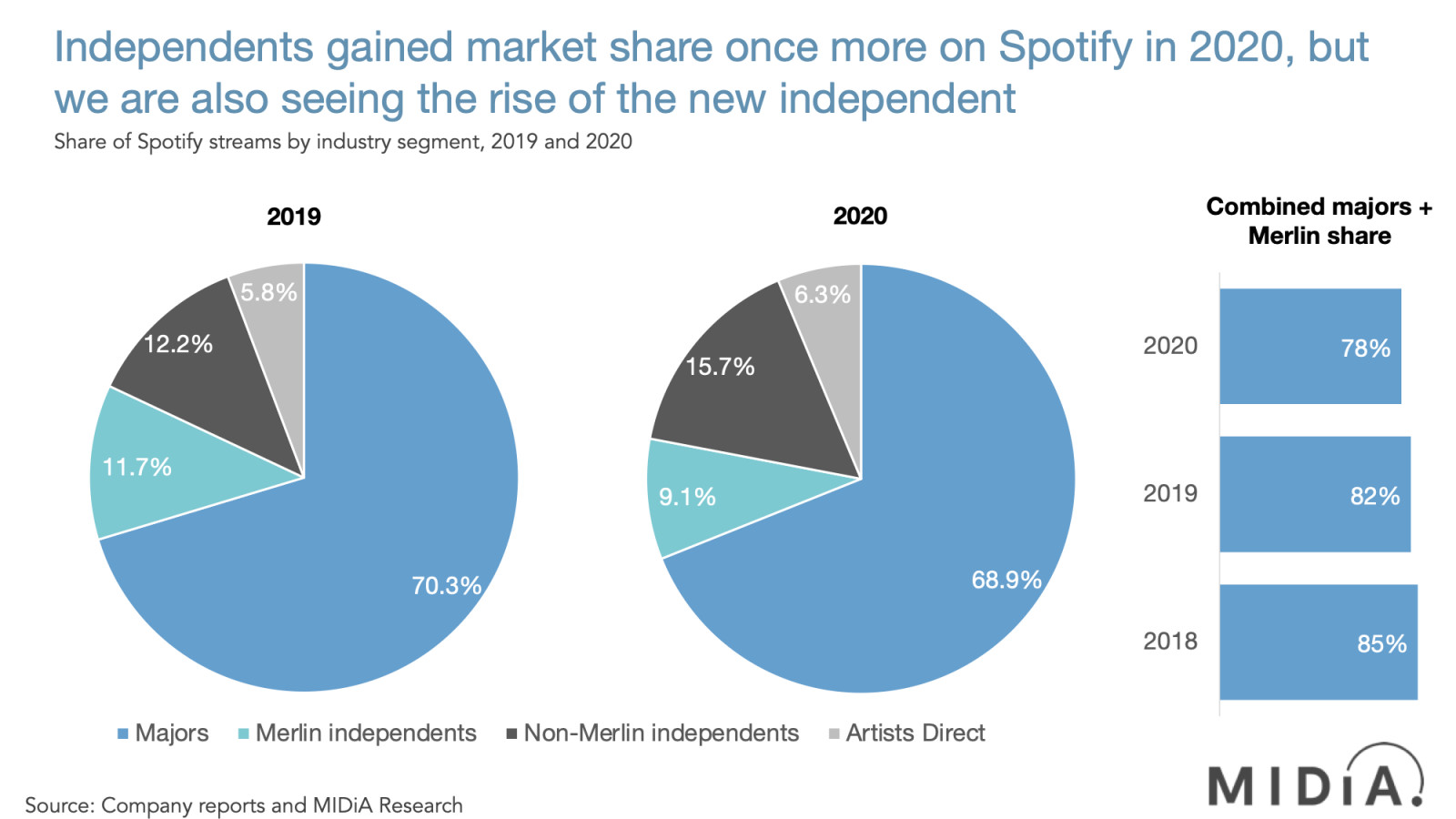
Technology makes it easier to record, produce, and distribute music without the help of a record label. As streaming continues to grow in popularity, it seems like this DIY segment — and the amount of money DIY artists can actually earn — will grow as well.
Back in 2011, Future of Music Coalition conducted an insightful study that compares the income of independent musicians across genres, age ranges, years of experience, and gender. This data is a bit out of date by now, but there are still insightful takeaways to be found by messing around with the sliders and looking at different categories.
In summary, the average working musician earns $35,300 USD gross revenue annually from their music career, counting income from a variety of sources. So while that number sounds low, it isn’t the whole picture.
Touring and teaching are big
The Future of Music Coalition study featured 4,453 respondents in total, 74 percent of whom have 16+ years working in music. The biggest source of music-related income for artists working in rock, country, jazz, and “all other genres” (AOG) — which presumably includes pop, electronic, DJs, rappers, and other musicians who don’t fit the other criteria — is live performance.

What’s interesting about the Future of Music Coalition study is that most of the non-classical music respondents self-identified in the “all other genres” category. The study presents an average annual gross estimated music income (EMI) breakdown for that group: 30 percent from live performance, 18 percent from teaching, 12 percent from salaried playing, 11 percent from composing, 10 percent from session work, 7.3 percent from sound recordings, and 1.9 percent from merchandise, with 9.5 percent for “other.”
It should be noted that only 33 percent of the musicians surveyed would be considered full-time musicians, making at least 75 percent of their income from music-related sources. Average direct income from music for “all other genres” artists in the 18 to 29-years-old-range was $18,400, while the average non-music income was $11,800, for a total gross average of $30,200. So, most musicians don’t rely on a salary to get by.
Side gigs are normal to earn more money
If you’re feeling despair after looking at these statistics — don’t. If you’re making music, you have to first acknowledge that you do it because it’s what you want to do, not because you’re guaranteed to get rich or even make a living from it.
If you are pursuing it as a full-time job, then you have to acknowledge that the economic reality of being a musician for a living isn’t always rosy. You have to accept that and then move forward anyway.
If you’re feeling shame at the prospect of not being able to work on your art full time — don’t. Many of the most compelling artists of today work part-time jobs and scrimp and save while working on their craft. There are also different ways to monetize your music outside of gigs and merchandise. The Vulture article “17 Indie Artists on Their Oddest Odd Jobs That Pay the Bills When Music Doesn’t” from 2019 tells these stories better than any data ever could.
Case study: indie rock composer-performer
The Future of Music Coalition report uses a case study to illustrate a musician’s potential income and expenditures. Take an indie rock composer-performer “who writes, records and performs [their] own music and regularly tours the US and abroad.” Imagine this person is in two bands that toured multiple countries and played festivals and large rock clubs. This musician also tours solo “in nightclubs, galleries, pubs, art centers, museums, small theaters, and bars.”
On top of this, the artist has formal training in composition and music. They have appeared on dozens of records as a band member or session musician. They sometimes manage their own tours, and sometimes work with a booking agent for solo gigs. They have non-exclusive relationships with several independent record labels.
To round out this profile, they are a member of AFTRA, SoundExchange, and ASCAP. They are self-employed, do not have health insurance, and have no pension.
Gross income versus gross expenditures
The pie charts below show aggregate gross income, and the musician’s related expenses for 2008-2011. The pie chart for expenses is visually scaled to represent that expenses consume about 53 percent of gross income.
For this type of musician — indie rock composer-performer — 30.5 percent of their income is from live performance, 29.8 percent is salaried, and only 6.2 percent is from performing rights organization (PRO) royalties. Note that the 9.4 percent publishing royalties slice includes income from mechanicals based on sales of the songs they co-wrote.
Typical expenses, on the other hand, include booking commissions, equipment, publicity, and merchandise. The lion’s share is allocated to travel, taking up an estimated 36 percent of expenses. For a musician that’s constantly on the road, plane tickets, baggage fees, gas, vehicle repairs, instrument appraisals, insurance, and more can add up fast.
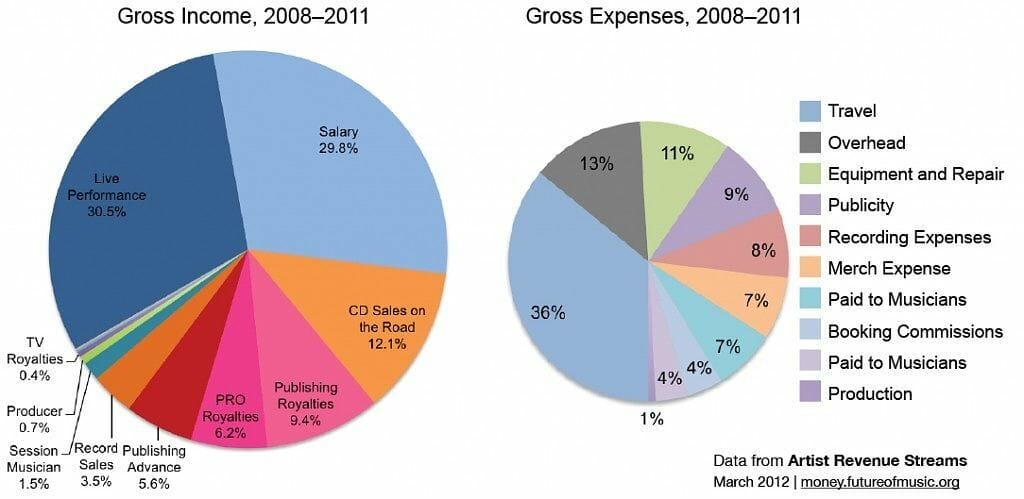
After expenses and taxes, it’s estimated this musician will bring in around $12,000 in net income. It’s not a huge number, but not bad if you consider it supplemental income. Plus, all of your gear purchases (including software) are tax-deductible, which helps lift your net income.
There are variables. Genre makes a difference. For example, rock musicians make less money on compositions than other genres. But classical musicians make more. And as the study suggests, the older you are and the more experience you have, the more money you make. Musicians aged 18-29 earn an average of $28,260 in a year, musicians aged 40-49 earn an average of $63,900 in a year. Pretty simple and on-trend with life in general.
Streaming is king
Live performance is how most artists make the majority of their income but don’t sleep on streaming income, especially if you are an unsigned, self-releasing artist. The music industry has bounced back from the Napster/piracy era thanks to the widespread adoption of streaming services like Spotify, Apple Music, and Tidal.
Around the turn of the last decade, as more and more people started to use streaming as their primary method of listening to music and paying premium subscribers went up, royalty revenues started to grow as well. As of 2020, the industry is in its sixth consecutive year of growth.

According to the RIAA, streaming made up 83 percent of total music industry revenue in 2020, growing from 13.4 percent in the previous year. The exact amount you make per Spotify stream varies depending on factors such as the country of the listener and whether or not you are signed to a major label that has an agreement with the service.
By most estimates, you earn just over $3.00 for every 1,000 Spotify streams — and that’s before you account for the record label’s share (if you have a label, that is).
That doesn’t seem like a lot, but consider how it used to be just 20 years ago when the record industry still ran on CDs. You pretty much needed a label deal to get your music out there in any meaningful way. In that sense, streaming has leveled the playing field.
Today, anyone can record and distribute their music to platforms with millions of listeners, and they’re doing exactly that. As of 2021, a new song is uploaded to Spotify every second. (That’s a lot of music.)
According to the most recent statistics from Spotify, over 7,500 artists are making $100,000 per year with Spotify streams, a number that’s grown by 79 percent over the past four years — which means that the number of artists making between $50,000 and $100,000 per year is even higher than that.
The key is figuring out how to break through the noise, however you can. In that sense, it’s the same as it’s always been.
Conclusion
So what does all this mean? If you’re doing this to count huge stacks of cash, you’re probably in the wrong industry. But if you believe that you have something unique to say with your art, there’s never been a more viable time for you to pursue that dream and find your audience. You’ve got nothing to lose. All you have to do is try.
Learn more
The MIDIA Research data is from 2020 and focuses on independent musicians. The Future of Music Coalition report is based on 2008-2012 wages, a sample size of 4,453, and a case study of a single indie musician. We strongly recommend diving deeper into both full reports.
For additional insights into the music market, the U.S. Copyright Office conducted a study in 2014 detailing the current state of affairs in the industry. The report touches on all aspects of music income including physical, digital, licensing, publishing, and more.
